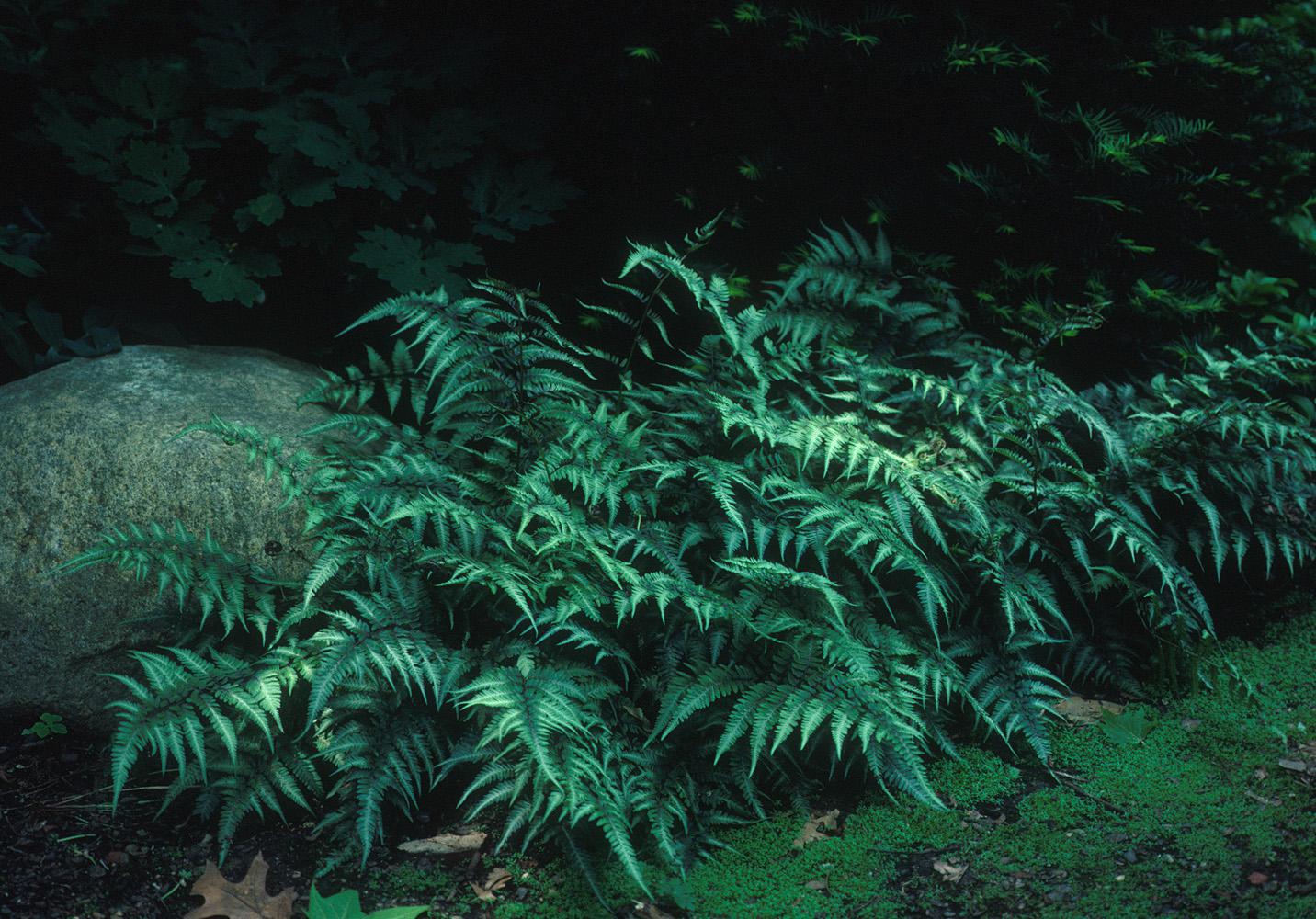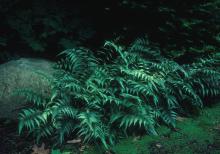Information Possibly Outdated
The information presented on this page was originally released on January 1, 2004. It may not be outdated, but please search our site for more current information. If you plan to quote or reference this information in a publication, please check with the Extension specialist or author before proceeding.
Japanese painted fern takes top 2004 honors
By Norman Winter
MSU Horticulturist
Central Mississippi Research & Extension Center
The Perennial Plant Association has been one of the hardest working and innovative promotional organizations in the country. They keep you on your toes because you never know whether the winner will be a flower, grass, or in this year's case, a fern.
The Perennial Plant Association has named Athyrium niponicum Pictum the 2004 Perennial Plant of the Year. This perennial low-maintenance Japanese painted fern is one of the showiest ferns for shade gardens.
It is popular due to its hardiness nearly everywhere in the United States, except in the desert and northernmost areas in zone 3. In Mississippi gardens it has become one of the showiest shade plants.
Pictum grows 18 inches tall and can multiply into a clump that is more than 2 feet wide. Pictum produces 12- to 18-inch fronds that are a soft shade of metallic silver-gray with hints of red and blue.
This lovely fern, which prefers partial to full shade, makes an outstanding combination plant for adding color, texture and habit to landscape beds and containers.
The magnificent texture and color of the fronds electrify shady areas of the garden and make the fern a wonderful companion for a variety of shade plants. Japanese painted fern provides a nice contrast to other shade-loving perennials such as hosta, heuchera and other ferns.
A popular combination is Japanese painted fern with Patriot and Ginko Craig hostas. For something different, try Hosta sieboldiana Elegans. Another friendly companion plant for the Japanese painted fern is Tiarella (foam flower), which is also finding its way to Southern gardens including the hybrid with the heuchera called heucherella.
One of the most unique possibilities is to use this fern with sedges. Carex (sedges) are shade-loving, easy-to-grow, grasslike plants. Try Carex morrowii Variegata or Carex siderosticha Silver Sceptre.
Other selections that are excellent compliments to Japanese painted fern include Lamium maculatum Orchid Frost and Purple Dragon. Use these selections with white flowers or variegated leaves to echo or pick other colors for contrast. Most any plant will make a great counterpart to the graceful, attractive and versatile Athyrium niponicum Pictum.
This fern needs a well-drained, compost-rich soil and flourishes where moisture and humidity abound. Pictum grows best in part to full shade. The best frond color results in light shade. In the South, a few hours of morning sun will bring out the high colors.
Add 2 to 3 inches of compost or peat moss to the beds each spring or fall. This fern is extremely reliable when grown in the proper environmental conditions. Its colorful foliage should be vibrant from early spring until frost, when it will go dormant and reemerge with its excellent foliage the next spring.
The Japanese painted fern may be propagated by dividing the clump. It is easy for a homeowner to buy the more colorful and uniform plants in the quantity needed or buy a few and divide the clumps yearly as needed. A well-grown plant can be separated in early spring into three to four divisions and replanted. Fertilize at one-half the rate of other perennials with an organic or time-release fertilizer.








